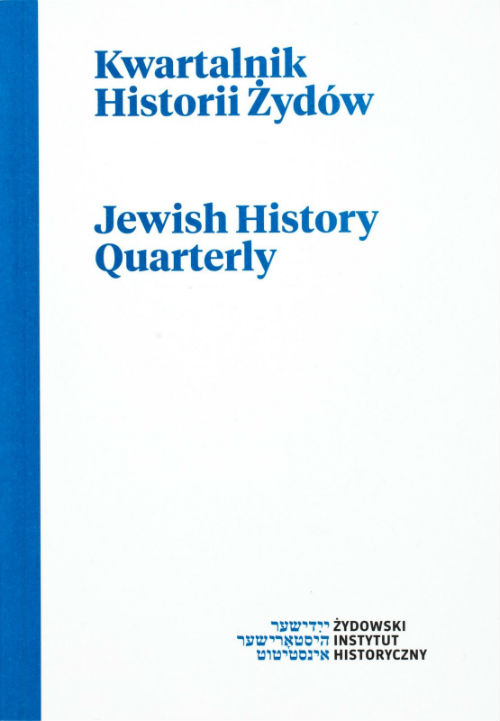Teologia „Księgi światła ukrytego” (Sefer ha-Bahir): bukiet sukotowy. Cz. 2: Ciało, przestrzeń, szechina
The Theology of the “Book of Brightness” (Sefer ha-Bahir): The Sukkot Bouquet. Part 2: The Body, Space, Shekhinah
Author(s): Wojciech BrojerSubject(s): Jewish studies
Published by: Żydowski Instytut Historyczny
Keywords: Book of Brightness; Sefer ha-bahir; Feast of the Booths; lulav – sukkot bouquet; anthropology; world space; Shekhinah
Summary/Abstract: The Book of Brightness (Sefer ha-bahir), is regarded as the first record of Mediaeval Jewish Kaballah. This esoteric religious treatise has not received a holistic theological analysis so far. The analyses attempted by Gershom Scholem, Elliot Wolfson or Peter Schäfer were only fragmentary and not always correct. It has not been noted so far that one of the fundamental problems of the Book of Brightness is the Feast of Booths, its liturgy and first of all the rite of the lulav (four species). Nearly one-half of the text relates to problems connected with that holy day. The article focuses on the structure, liturgy and symbolism of the lulav. This second part of the article centres on anthropology, the image of the world space and the category of the Shekhinah. The sukkot bouquet is a model of the human body, made up of seven parts: the frond of the date palm is the backbone and the phallus, the three myrtle branches are the head flanked by the arms, the two twigs of river bank willow are the legs, and finally the etrog, the female complement of the man, the vagina, counted as one together with the phallus. The author of Sefer ha-bahir borrows the concept of space from Sefer Yetzirah. It is a space made up of seven elements: the four geographic directions, above, below, and the centre (Palace of Holiness). On this continuum, the author superimposes his anthropological model, lying along the east-west axis, facing down, with the left leg pointing north. The author seeks to reveal the functional differentiation of the directions of the world. The east-west axis, symbolized by the palm, with myrtle (the head) to the east and the etrog (the female element) in the west, represents the dimension of the Divine judgement over Israel. The vertical axis is attesting to God’s presence in the world. Ten sefiroth, named by the author of the Book of Brightness, are divided into three higher ones with the female element bina (Mother of the world) and seven lower ones, which are subordinated to the elements of the sukkot bouquet. This structure of the space is complemented by the fundamental liturgical feature of the Feast of the Booths, the swaying of the lulav along three orthogonal axes of the world. By moving the bouquet, the participant in sukkot liturgy maps out a tridimensional infinitely expandable space and renews its senses. Students of Jewish mysticism agree that Shekhinah is the tenth and lowest sefiroth. This thesis is not supported by the text of the treatise. Bahir identifies two shekhinahs, the upper and the lower one. The former appears to be identical to bina, the Mother of the world; the latter includes all the seven lower sefiroth. In this sense the shekhinah is a kind of Divine hypostasis of a sexual, feminine nature. The Shekhinah is an intermediary between God and Israel, who receives the power of judging the Chosen Nation. Through the sukkot rituals, the mystic can influence her and, through her, influence the God’s decisions.
Journal: Kwartalnik Historii Żydów
- Issue Year: 243/2012
- Issue No: 03
- Page Range: 301-338
- Page Count: 38
- Language: Polish

